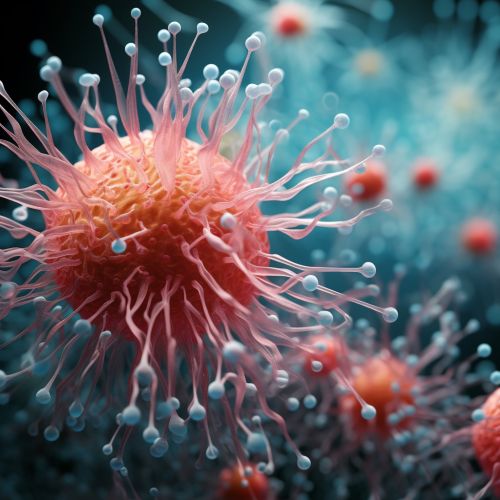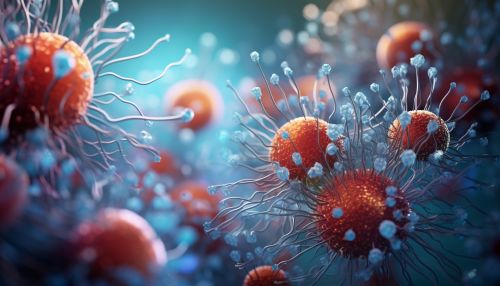Pathogen
Introduction
A pathogen or infectious agent is a biological agent that causes disease or illness to its host. The term is most often used to describe an infectious microorganism or viral particle within the host organism. Pathogens can be bacteria, viruses, or other microorganisms, and they can cause a wide variety of diseases in their host.
Classification
Pathogens can be classified into several broad categories, including bacteria, viruses, fungi, parasites, and prions. Each of these categories contains numerous specific types of pathogens that can cause disease in humans and other animals.


Bacteria
Bacteria are single-celled organisms that can cause a variety of diseases. Some bacteria are beneficial to humans and are necessary for things like digestion, while others can be harmful and cause diseases. Harmful bacteria, or pathogens, can cause diseases such as tuberculosis, strep throat, and urinary tract infections.
Viruses
Viruses are smaller than bacteria and are made up of a protein coat and a core of genetic material. Viruses invade the cells of their host and use the host's cellular machinery to reproduce. Viruses can cause a wide variety of diseases, including the common cold, influenza, HIV/AIDS, and COVID-19.
Fungi
Fungi are a group of organisms that includes yeasts, molds, and mushrooms. Some fungi are beneficial to humans, while others can cause disease. Fungal pathogens can cause diseases such as athlete's foot, ringworm, and histoplasmosis.
Parasites
Parasites are organisms that live on or in a host organism and get their food from or at the expense of their host. There are many different types of parasites, including protozoa and worms. Parasitic diseases include malaria, giardiasis, and toxoplasmosis.
Prions
Prions are infectious agents composed entirely of a protein material that can fold in multiple, structurally distinct ways. This abnormal folding of the prion proteins leads to brain damage and the characteristic signs and symptoms of the disease. Prion diseases include Creutzfeldt-Jakob disease and kuru.
Pathogenesis
Pathogenesis is the process by which a disease develops in the body. The pathogenesis of a disease caused by a pathogen involves several steps, including entry into the host, adherence to host tissues, invasion of host tissues, and evasion of the host's immune response.
Transmission
Pathogens can be transmitted in a variety of ways, including through the air, by direct contact, through food and water, and by vectors such as mosquitoes and ticks. The method of transmission can greatly influence the epidemiology of the diseases that pathogens cause.
Prevention and Control
Prevention and control of diseases caused by pathogens can involve a variety of strategies, including vaccination, sanitation, use of antibiotics, and public health measures such as isolation and quarantine.
See Also
Epidemiology Infectious Disease Microbiology
